Quat Dong village in Thuong Tin district is famous for its lace embroidery craft since the 17th century. To create a complete embroidery work, artisans must go through many steps such as: drawing a pattern, stretching the background, changing the style, choosing colored thread and then embroidering. To do so, from a young age, the craftsman must learn how to hold the needle, thread the thread correctly, learn to pierce the needle so that the foot is small and the foot of the thread must be flat and smooth. In addition, they must know how to pull the thread to the right tension and mix colors harmoniously.
 Quat Dong village embroidery artisans have created a wide variety of products, from traditional groups such as parallel sentences, ceremonial gates, parasols, flags, canopies, tablecloths, traditional stage costumes... to creative landscape and portrait embroidery paintings such as: Uncle Ho's stilt house, One Pillar Pagoda,...
Quat Dong village embroidery artisans have created a wide variety of products, from traditional groups such as parallel sentences, ceremonial gates, parasols, flags, canopies, tablecloths, traditional stage costumes... to creative landscape and portrait embroidery paintings such as: Uncle Ho's stilt house, One Pillar Pagoda,...  Quat Dong embroidery craft village is located in the center of Quat Dong commune, with an area of about 50 hectares, of which the residential land area is about 17 hectares, the rest is agricultural land. This is identified as a craft village in the list of priority investment projects to develop craft villages associated with tourism of Hanoi City until 2020, oriented to 2030.
Quat Dong embroidery craft village is located in the center of Quat Dong commune, with an area of about 50 hectares, of which the residential land area is about 17 hectares, the rest is agricultural land. This is identified as a craft village in the list of priority investment projects to develop craft villages associated with tourism of Hanoi City until 2020, oriented to 2030.  During the Nguyen Dynasty, Quat Dong commune was one of nine communes belonging to Binh Lang Phu commune, Thuong Tin town, Son Nam Thuong. Quat Dong village is a large village with a population accounting for 2/3 of the total population of the commune. Quat Dong commune has many villages and hamlets engaged in embroidery, but is considered the origin of hand embroidery, people often mention Quat Dong village. Because according to records in Ngu Xa communal house, Quat Dong and Tu Thi temple, Hanoi , the founder of Quat Dong embroidery as well as the embroidery profession in general of the three regions of the North, Central and South is Dr. Le Cong Hanh, real name is Bui Cong Khai, lived in the 17th century in Quat Dong village.
During the Nguyen Dynasty, Quat Dong commune was one of nine communes belonging to Binh Lang Phu commune, Thuong Tin town, Son Nam Thuong. Quat Dong village is a large village with a population accounting for 2/3 of the total population of the commune. Quat Dong commune has many villages and hamlets engaged in embroidery, but is considered the origin of hand embroidery, people often mention Quat Dong village. Because according to records in Ngu Xa communal house, Quat Dong and Tu Thi temple, Hanoi , the founder of Quat Dong embroidery as well as the embroidery profession in general of the three regions of the North, Central and South is Dr. Le Cong Hanh, real name is Bui Cong Khai, lived in the 17th century in Quat Dong village.  Le Cong Hanh's birth name was Tran Quoc Khai. He was born in the year of Binh Ngo (1606) in Quat Dong commune, Thuong Tin district, Ha Dong province (now Thuong Tin district, Hanoi). In the year of Binh Tuat (1646), he was sent as an envoy to the Ming Dynasty. During this mission, he accidentally learned the embroidery craft and taught it to the villagers of Quat Dong and then expanded it to other provinces, including Bac Ninh and Hung Yen. Besides, he also taught people how to make parasols. To remember his merits, after Le Cong Hanh passed away (in 1661), the people in the area built a temple and honored him as the founder of the embroidery craft.
Le Cong Hanh's birth name was Tran Quoc Khai. He was born in the year of Binh Ngo (1606) in Quat Dong commune, Thuong Tin district, Ha Dong province (now Thuong Tin district, Hanoi). In the year of Binh Tuat (1646), he was sent as an envoy to the Ming Dynasty. During this mission, he accidentally learned the embroidery craft and taught it to the villagers of Quat Dong and then expanded it to other provinces, including Bac Ninh and Hung Yen. Besides, he also taught people how to make parasols. To remember his merits, after Le Cong Hanh passed away (in 1661), the people in the area built a temple and honored him as the founder of the embroidery craft.  Some documents state that before Le Cong Hanh taught embroidery and parasol making to the people, these crafts already existed in our country. However, they developed on a small scale, with rather simple techniques, using only a few colors of thread and mainly serving the king and his mandarins. Old historical books also recorded that during the Tran Dynasty, our king and his mandarins used embroidery and parasols. In 1289, more than 350 years before Le Cong Hanh's diplomatic mission, the Tran King sent the Nguyen King a red silk cushion embroidered with gold thread, and a silk-bordered brocade carpet (according to Tu Minh Thien's writing in the book Thien Nam Hanh Ky).
Some documents state that before Le Cong Hanh taught embroidery and parasol making to the people, these crafts already existed in our country. However, they developed on a small scale, with rather simple techniques, using only a few colors of thread and mainly serving the king and his mandarins. Old historical books also recorded that during the Tran Dynasty, our king and his mandarins used embroidery and parasols. In 1289, more than 350 years before Le Cong Hanh's diplomatic mission, the Tran King sent the Nguyen King a red silk cushion embroidered with gold thread, and a silk-bordered brocade carpet (according to Tu Minh Thien's writing in the book Thien Nam Hanh Ky).Heritage Magazine


![[Photo] Hanoi morning of October 1: Prolonged flooding, people wade to work](https://vphoto.vietnam.vn/thumb/1200x675/vietnam/resource/IMAGE/2025/10/1/189be28938e3493fa26b2938efa2059e)
![[Photo] Keep your warehouse safe in all situations](https://vphoto.vietnam.vn/thumb/1200x675/vietnam/resource/IMAGE/2025/10/1/3eb4eceafe68497989865e7faa4e4d0e)
![[Photo] President of the Cuban National Assembly visits President Ho Chi Minh's Mausoleum](https://vphoto.vietnam.vn/thumb/1200x675/vietnam/resource/IMAGE/2025/10/1/39f1142310fc4dae9e3de4fcc9ac2ed0)



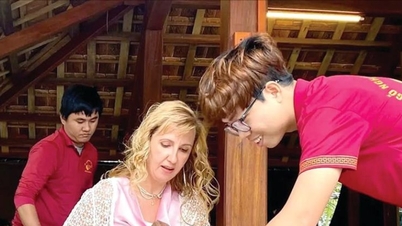


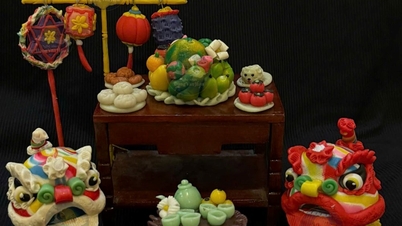

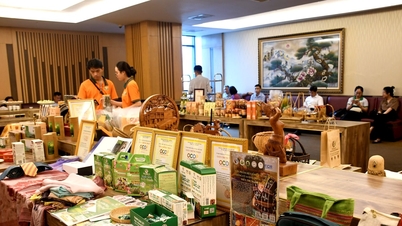
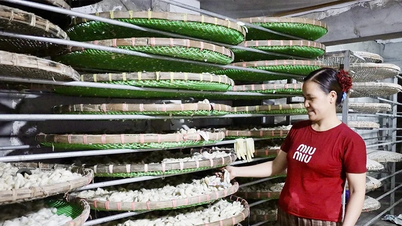

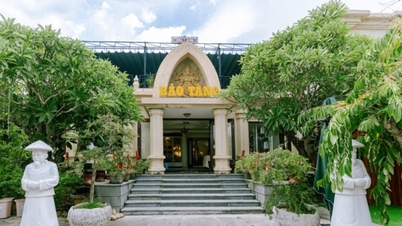

















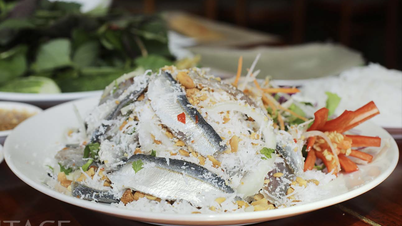








































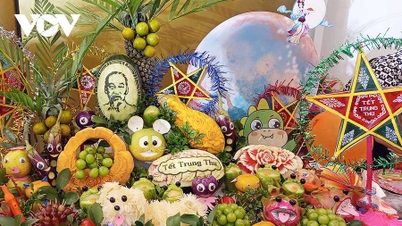


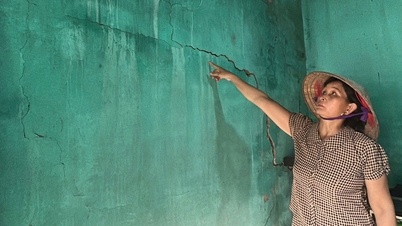

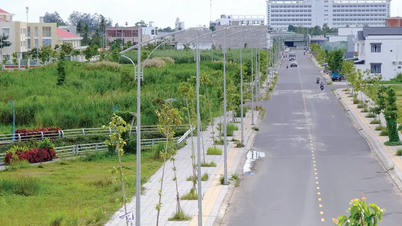

















Comment (0)